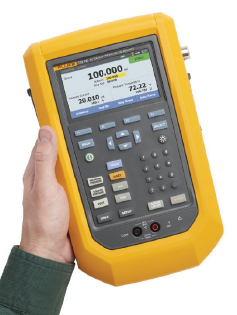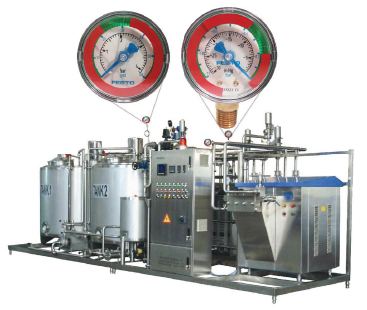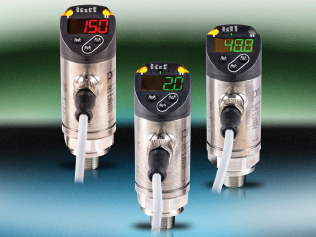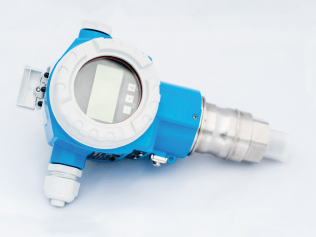- Products
Summary

Automatic pressure calibrator

With the portable 729, technicians input a target pressure, and the calibrator automatically pumps to the desired set point while the internal fine adjustment control stabilizes the pressure at the requested value. The device has automatic pressure generation and control for multiple tests to 300 psi (20 bar, 2 MPa). Calibration documentation is done using defined templates for transmitters and switches. Input the starting and ending test pressures and number of test points, and the calibrator documents the applied pressure, measured mA, and percentage error for each test point. The bright graphical display flags test results that are out of tolerance in red.
Fluke
www.fluke.com
Pressure and vacuum gauges

Festo
www.festo.com
Digital pressure sensors

Encased in a stainless-steel housing, the EPS-series sensors have an IP67 ingress protection rating, and achieve their atmospheric pressure reference at the four-pin M12 electrical connection. The standard ¼" NPT male process connection allows direct installation without requiring extra fittings. With no moving parts, such as pistons or springs, that can stick or break, two solid-state switch outputs are an alternative to mechanical pressure switches. On certain models, the second output can be configured as a scalable analog signal, turning the unit into a combination pressure switch and transmitter. The built-in two-color digital display indicates the measured pressure and switch set points.
AutomationDirect
www.automationdirect.com
Low-power output

The PMP71 measures absolute and gauge pressure of gas, steam, or liquid and has built-in algorithms to calculate level, volume, and mass of liquids. Measuring spans are available in ranges from -6 psi to +6 psi up to -15 psi to 10,500 psi. For safe operation at process temperatures up to 752°F, it has a piezoresistive measuring cell and a metallic welded process isolating diaphragm. The PMP71 has ATEX, FM, CSA, NEPSI, and IECEx approvals and is suitable for use in up to SIL 3 hazardous applications. The voltage output version is available with the CSA C/US XP approval in North America.
Endress+Hauser
www.endress.com/en
Reader Feedback
We want to hear from you! Please send us your comments and questions about this topic to InTechmagazine@isa.org.


